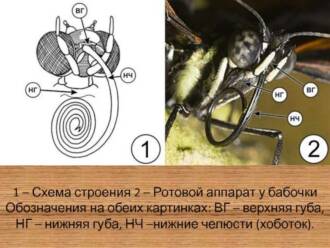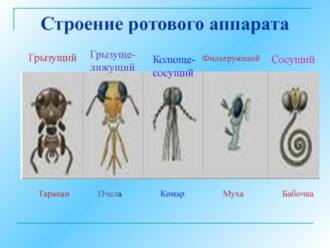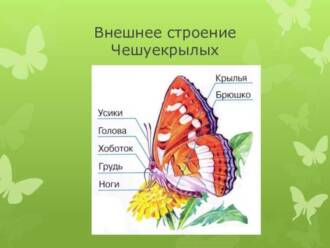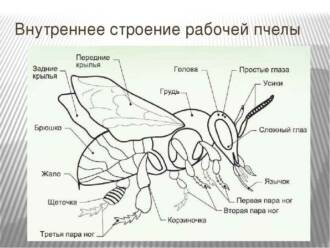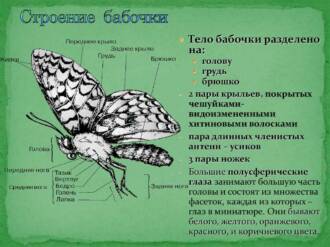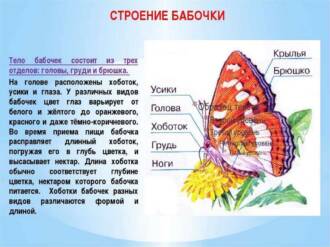Many features of butterflies are very peculiar and are not found in other insects. The most characteristic of them are the sucking mouth apparatus and the scaly cover of the wings. The vast majority of butterflies have both of these traits. In cases where one of them is absent, the other is always present.

Mouth organs, inherent in many other insects, are not found in butterflies: the upper lip, upper jaws and lower lip are either absent at all, or they are barely distinguishable. But the lower jaws, on the contrary, are very strongly elongated and, adjoining each other only at the edges, form a hollow tube. The insect sucks nectar or other liquid food with the help of this proboscis. In this case, the role of the pump is played by special muscles located on its sides. Straightening due to the injection of blood fluid, the elastic proboscis twists into a spiral when it flows back.
There are few deviations in the structure of the oral organs in butterflies. For example, in an ancient family of toothed moths, instead of a proboscis, upper jaws - mandibles - are preserved. With their help, these insects gnaw through the shells of pollen grains, which they feed on.
Representatives of the cocoonworm, corydalis, bagworm families, as well as some peacock-eyes As adults, they don't eat at all. The energy for life is given to them by the stock of fat accumulated at the stage of the larva. The mouth apparatus of these butterflies decreases in size (is reduced) and becomes inoperative. Finally, in a number of nocturnal Lepidoptera, the proboscis is pointed at the end, equipped with a brush of long hairs and serves as a piercing tool.
The carelessness with which butterflies flutter from flower to flower is just an illusion. Adult insects, feeding mainly on nectar, have to look for "their" plants. Indeed, in order to get a sweet bone hidden in the depths of the corolla, one must have a proboscis of the appropriate size. Some hawk moths it is so large that it exceeds the length of the body. And the world record holder is one of the Madagascar hawks with a 30-centimeter proboscis. It is this depth that the corolla of the orchid pollinated by this butterfly has.
Generally speaking, the flowers of carnations and orchids can only rely on Lepidoptera for cross-pollination. However, nectar is not the only food for butterflies. They are also very attracted to sweet juices that come from wounds or cracks in plants, as well as those formed during the rotting of fruits. As strange as it may seem, many of the most beautiful butterflies prefer excrement and even tissue from decomposing animal corpses to nectar, as long as these delicacies are liquefied. In the fauna of our country, such unusual tastes are possessed by butterflies - peredivnitsy, pigeons, Far Eastern handsome machaons Maaka.
Butterflies also really need mineral salts and sometimes accumulate in large quantities in those places where they come to the surface. Although all insects are six-legged, some species butterflies, the front pair of limbs is atrophied, and they move only on four legs.
Read more:
